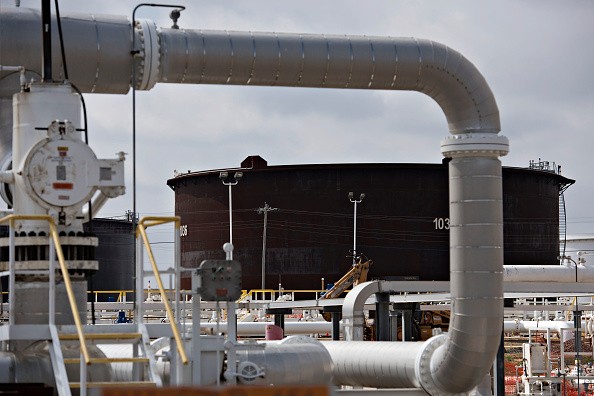Oil Prices Drop Below $80 After US Oil and Petroleum Reserve Reach Highest Level
By Thea Felicity
May 01, 2024 01:41 PM EDT
May 01, 2024 01:41 PM EDT

(Photo : Daniel Acker/Bloomberg via Getty Images)
Following US crude inventories reaching their highest level, oil prices experienced further declines, according to BBC.
In specific, West Texas Intermediate fell below $80 per barrel, hitting its lowest intraday price since mid-March. This drop breached the 200-day moving average, a key support level for over a month.
It's worth noting that US crude stockpiles surged by 7.27 million barrels last week, surpassing the 4.91 million-barrel gain projected by an industry group on Tuesday (May 1).
Many traders were surprised by the unexpected increase in crude oil inventories. The Federal Reserve's decision to raise interest rates and the rapid selling of crude oil after its prices fell below certain moving average levels has led to a decrease in confidence among traders about the future outlook for crude oil.
This increase in US reserve also compounds existing challenges, including the potential for a cease-fire to ease tensions in the Middle East. Last month, VCPost reported that oil crude prices soared to their highest level since October following Iran's unprecedented attack on Israel.
READ NEXT: Middle East Conflict Could Push Oil Prices to the Top and Drive Global Inflation, Says World Bank
While OPEC+ (Organization of the Petroleum Exporting Countries (OPEC) and non-OPEC oil-producing nations) supply cuts have supported prices, uncertainty surrounding US monetary policy and weakness in fuel markets, particularly diesel, are adding to the headwinds.
Economic data released Tuesday reinforced expectations that Fed officials would maintain interest rates at a two-decade high. The fact that contracts are trading below their 50-day moving averages suggests a pessimistic outlook among traders. If this downward trend continues, it could lead to more selling activity in the market.
Additionally, the reduced trading activity on Wednesday (May 2) due to the Labor Day holiday observed in several countries worsened the volatility of the market.
Continued declining oil prices can affect the stock market, particularly energy sector stocks, and impact investor sentiment and confidence. This could lead to reduced investment in oil exploration and production activities.
© 2024 VCPOST, All rights reserved. Do not reproduce without permission.
Join the Conversation